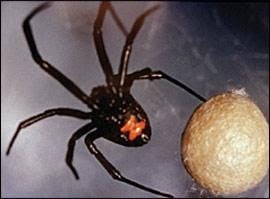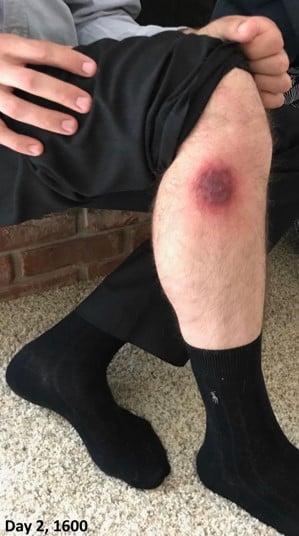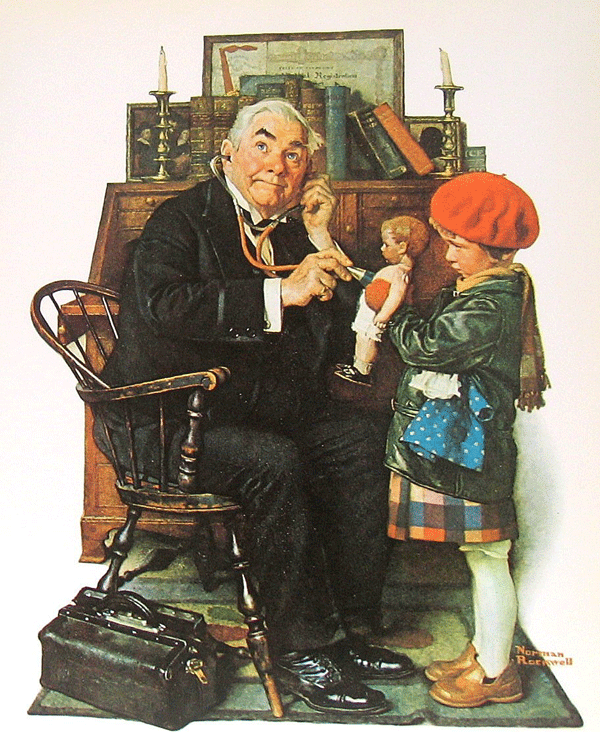Wilderness Pearls for USMLE exams: Spider Bites and Summertime Sun
Alexa Van Besien, MSIV - University of Maryland School of Medicine
EMRA MSC NE Coordinator, 2021-2022
Alexander Gallaer, MSIV - University of Connecticut School of Medicine
EMRA MSC NE2 Regional Representative, 2021-2022
Michelle Abrokwa, MSIV - New York Medical College
EMRA MSC NE1 Regional Representative, 2021-2022
Jessica André, MSIII - Howard University College of Medicine
EMRA MSC Mid-Atlantic Regional Representative, 2021-2022
Social distancing efforts implemented to reduce the spread of COVID-19 have led to a surge in people taking advantage of outdoor activities. These pursuits are associated with medical complications that come from exposure and injury. Wilderness medicine is a discipline that focuses on complications from being at high altitude, diving to depths, envenomation, trauma, hyperthermia, frostbite, and avalanche medicine (Sward et al.). This article is a brief summary of some wilderness medicine pearls that are high yield for USMLE board exams review and that you may encounter in your emergency department during warmer months: spider bites and hyperthermia.
Questions about black widow and brown recluse spider bites are classic for the USMLE Step 1 and Step 2 examinations. Environmental exposure can lead to frostbite and differing degrees of hyperthermia. This article will discuss clinical features associated with heat exhaustion and heat stroke as well as management features for both.
Black Widow Spider Envenomation

Image 1. Black widow spider (from Diaz et al.)
Latrodectism refers to the severe systemic manifestations of a black widow spider (Latrodectus spp.) bite (Rahmani et al.). There are five species of black widow spiders in the United States and the Southern Black Widow spider (Latrodectus mactans) is the most common. These spiders are most active during the warmer summer months (Diaz et al.). The black widow spider venom contains alpha-latrotoxin (α-LTX) that binds to presynaptic nerve terminals and stimulates massive release of the neurotransmitter, acetylcholine (Ryan et al.). The bite from a black widow spider may result in no pain to minor pin-prick irritation immediately. Unlike bites from the brown recluse, black widow spider bites often lead to more pronounced systemic symptoms. These symptoms typically start within a few minutes to two hours (Diaz et al., Rahmani et al.) and include nausea and vomiting, myalgias, and cramping of the abdominal wall with rigidity. Muscle spasm at the site of the bite has been described (Diaz et al, Rahmani et al.). In 25 % of cases, erythema, diaphoresis, and piloerection are seen around the bite site (Braitberg et al.). Additional symptoms include fever, hypertension, hyperreflexia, paresthesia, priapism, ptosis, restlessness, among others. Initial management of patients with latrodectism includes local wound care, tetanus prophylaxis, and supportive care including analgesics. Benzodiazepines are used to treat muscle spasms. Use of black widow spider specific antivenom is associated with reduced duration of symptoms and is usually well tolerated. Unfortunately, this treatment has limited availability due to supply constraints. Administration of intravenous calcium has frequently been recommended. The data on this is limited and one retrospective study of 163 cases found no benefit with calcium (Clark et al.). Resolution of symptoms usually occurs over a few days.
Brown Recluse Spider Envenomation
The brown recluse spider (Loxosceles reclusa) is recognizable for its violin-shaped marking on its back. The clinical syndrome associated with its bite is known as loxoscelism. These spiders are most commonly active from March to October, with bites rarely occurring in the winter months (Vetter). Most often, bites are not painful and may not be noticed until symptoms begin to develop hours to days later (Isbister and Fan). Brown recluse venom contains the enzymes hyaluronidase and sphingomyelinase D, which lead to destruction of affected tissue. Increased neutrophil activity and platelet aggregation results in further localized necrosis (Rahmani et al.). The wound often resembles a “bulls-eye” lesion initially, with an indurated, edematous center surrounded by an erythematous ring (image 2) that later turns into the characteristic necrotic ulcer (Rahmani et al.). There may also be local hemorrhage, thrombosis, or vessel damage.

Image 2. Brown Recluse Bite on Day 2. (from Patti et al.)
Rarely, systemic symptoms such as acute renal failure, intravascular hemolysis, and rhabdomyolysis can result (Malaque et al.). In the age of methicillin-resistant Staphylococcus aureus infections, the wounds caused by brown recluse spiders may resemble simple cutaneous abscesses. The mnemonic ‘NOT RECLUSE’ may help to aid in differentiating recluse bites from skin infections (Stoecker et al.):
Numerous – recluse bites are usually solitary
Occurrence – recluse bites typically occur in secluded areas
Timing – wounds occurring from November to March are unlikely due to recluse spiders
Red Center – recluse bites tend to have a pale center
Elevated – recluse bites are flat or sunken
Chronic – wounds that persist are unlikely to be bites
Large – lesions > 10 cm are unlikely to be due to brown recluse bites
Ulcerates – wounds that ulcerate in < 7 days are less likely to be recluse bites
Swollen – swelling of adjacent tissue is unlikely
Exudative – purulence is not usually seen
While there were many remedies used in the past, including dapsone and glucocorticoids, management of cutaneous lesions focuses on local wound care and tetanus prophylaxis, when appropriate. Additionally, many patients require pain control and use of cold compresses (Auerbach et al.). Symptoms should be expected to resolve within several weeks, though skin damage may persist and form scars. Surgical debridement of necrotic tissue can be considered when initial swelling subsides after 1-2 weeks, but there is no evidence for early surgical intervention (Rees et al.). Admission and supportive care are appropriate for patients displaying systemic symptoms.
Heat exhaustion
Heat exhaustion is a form of heat-related illness that results from disruption of thermoregulation. Prompt recognition and removal of the patient from the environment causing the condition is key to prevent clinical worsening and ensure full recovery. The clinical criteria for the diagnosis of heat exhaustion includes a core body temperature of 38.3-40º Celsius (101-104º Fahrenheit) without signs of neurological dysfunction (confusion, tremors, hallucinations, altered thought processes) (Gopinath). Varying associated symptoms may be present, including, but not limited to, fatigue, malaise, nausea, vomiting, thirst, headache, and dehydration (Armstrong et al.). One important differentiating factor from heat stroke is the presence of diaphoresis in heat exhaustion but usually not in heat stroke (Gopinath). Management of heat exhaustion is primarily supportive, with non-invasive cooling and oral/IV rehydration often leading to the resolution of most cases within hours. Most cases can be discharged from the emergency department after ensuring the lack of complications and the clinical picture is improving.
Heat stroke
In contrast to heat exhaustion, heat stroke usually presents with a core body temperature of 40º C (104º F) or more and signs of neurological dysfunction such as delirium, hallucinations, loss of consciousness, and tremors (Hifumi et al.). An important complication to look out for is disseminated intravascular coagulation (DIC). On a board exam, if a question presents a patient with a history of heat exposure (sauna, outside in the sun, playing sports all day) and then shows you coagulation labs with prolonged PT, and PTT, consider heat stroke. It is important to be aware of the two types of heat stroke: exertional and non-exertional. Exertional heat stroke is classically seen in an athlete, soldier, or manual laborer performing physical activity, while non-exertional heat stroke occurs without strenuous activity, and on exams is typically involving and elderly and/or obese patient (Gaudio et al.). Management of heat stroke includes rapid cooling including cold water immersion and evaporation techniques. For exertional heat stroke, ice-water immersion is best, while evaporative cooling is better for elderly patients with non-exertional heat stroke (Gaudio et al.). Additional management with intravenous fluids and airway management in cases where there is severe altered mental status.
Many thanks to Dr. Gentry Wilkerson, Director of Clinical Research and Assistant Residency Program Director at University of Maryland School of Medicine, Dept. of Emergency Medicine, for reviewing this article.
Sources:
Armstrong L, Casa D, Millard-Stafford M, Moran D, Pyne S, Roberts W. Exertional Heat Illness during Training and Competition, Medicine & Science in Sports & Exercise: 2007;39(3): 556-572.
Auerbach PS, Cushing TA, Harris NS. Auerbach's wilderness medicine. Seventh edition. ed. Philadelphia, PA: Elsevier; 2017.
Braitberg G, Segal L. Spider bites - Assessment and management. Aust Fam Physician. 2009 Nov;38(11):862-7. PMID: 19893831.
Clark RF, Wethern-Kestner S, Vance MV, Gerkin R. Clinical presentation and treatment of black widow spider envenomation: A review of 163 cases. Ann Emerg Med. 1992;21(7):782-787.
Diaz JH, Leblanc KE. Common spider bites. Am Fam Physician. 2007 Mar 15;75(6):869-73. PMID: 17390599.
Gaudio FG, Grissom CK. Cooling Methods in Heat Stroke. J Emerg Med. 2016 Apr;50(4):607-16. doi: 10.1016/j.jemermed.2015.09.014. Epub 2015 Oct 31. PMID: 26525947.
Gopinath K G. Heat stroke and heat exhaustion: An update. Curr Med Issues. 2018;16:5-9.
Hifumi T, Kondo Y, Shimizu K, Miyake Y. Heat stroke. J Intensive Care. 2018;6:30. Published 2018 May 22. doi:10.1186/s40560-018-0298-4.
Isbister GK, Fan HW. Spider Bite. Lancet. 2011; 378(9808):2039-2047.
Malaque CM, Santoro ML, Cardoso JL, Conde MR, Novaes CT, Risk JY, França FO, de Medeiros CR, Fan HW. Toxicon. 2011; 58(8):664-71.
Patti L, Landgraf B, and Bryckowski C. Brown Recluse Spider Bite. JetEM. 2019; 4(3). DOI: https://doi.org/10.21980/J8TK99
Rahmani F, Banan Khojasteh SM, Ebrahimi Bakhtavar H, Rahmani F, Shahsavari Nia K, Faridaalaee G. Poisonous Spiders: Bites, Symptoms, and Treatment; an Educational Review. Emerg (Tehran). 2014;2(2):54-58.
Rees RS, Altenbern DP, Lynch JB, King LE Jr. Brown recluse spider bites. A comparison of early surgical excision versus dapsone and delayed surgical excision. Ann Surg. 1985;202(5):659.
Ryan NM, Buckley NA, Graudins A. Treatments for Latrodectism—A Systematic Review on Their Clinical Effectiveness. Toxins. 2017;9(4):148.
Stoecker WV, Vetter RS, Dyer JA. NOT RECLUSE—A Mnemonic Device to Avoid False Diagnoses of Brown Recluse Spider Bites. Jama Dermatol. 2017;153(5):377.
Sward DG, Bennett BL. Wilderness medicine. World J Emerg Med. 2014;5(1):5-15. doi:10.5847/wjem.j.issn.1920-8642.2014.01.001.
Vetter R. Seasonality of brown recluse spiders, Loxosceles reclusa, submitted by the general public: Implications for physicians regarding loxoscelism diagnoses. Toxicon. 2011; 58(8): 623-625.







